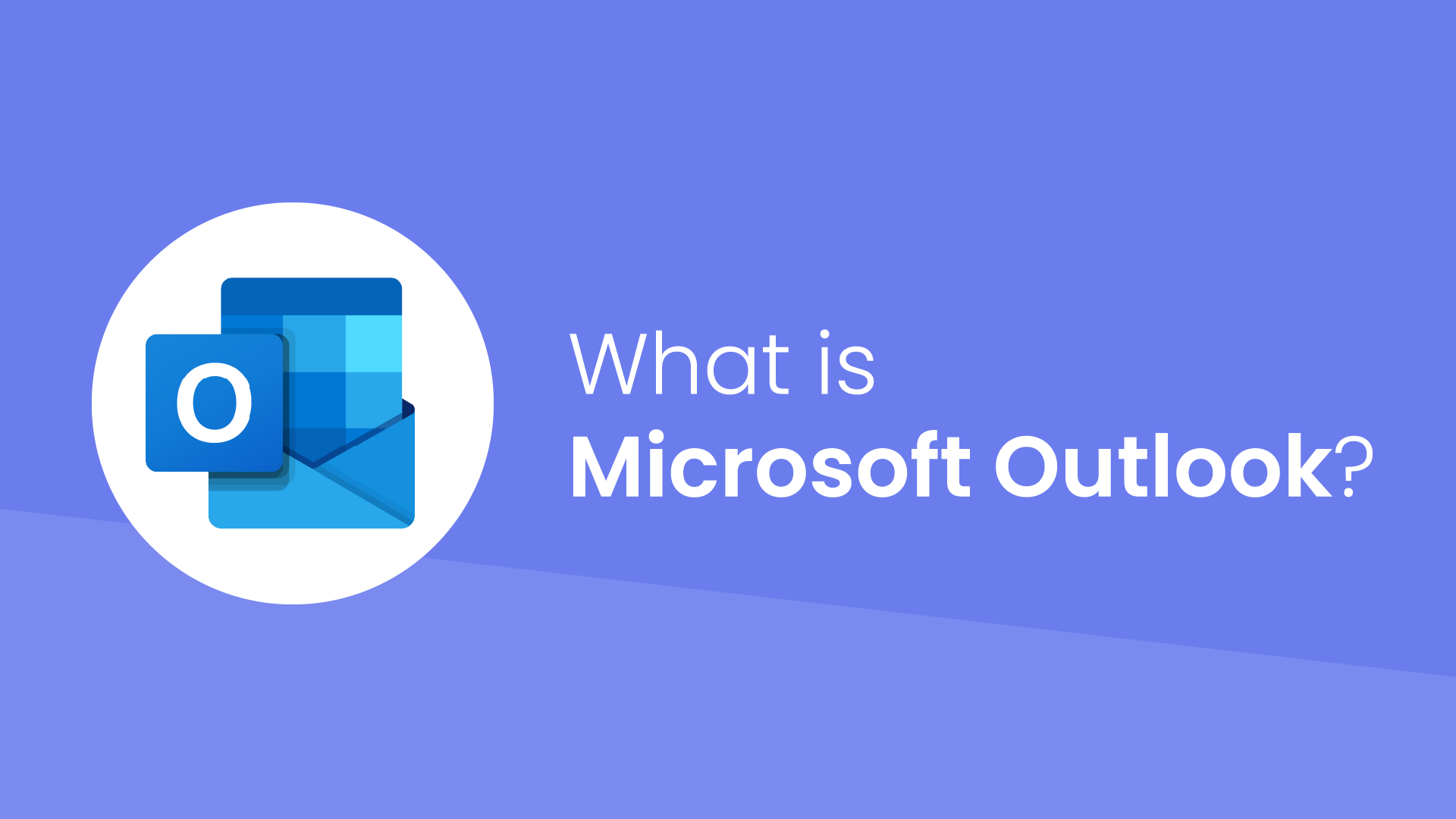

Email is one of those things we take for granted – like electricity or wifi. It’s just there, running in the background, keeping businesses and conversations moving. With nearly 38% of the market share, you may have used Microsoft Outlook to send an email at work, scheduled a meeting, or tried to organize your inbox.
For some, it’s the ultimate productivity companion, allowing them to easily manage their emails, calendars, and tasks. For others, you may have experienced a frustrating learning curve. But love it or hate it, Outlook has become a workplace staple, powering everything from daily check-ins to high-stakes client negotiations. So, what exactly makes it such a fixture in the modern office?
A brief history of Microsoft Outlook
Outlook first made its debut in 1997 as part of Microsoft Office 97. Back then, it was a simple free email service primarily designed to handle email communication. It featured basic email management tools, calendar functions, and rudimentary contact organization. Of course, however, as internet connectivity expanded and workplace demands increased, Outlook evolved to meet these changing needs.
Throughout the early 2000s, Microsoft introduced significant updates to enhance Outlook's enterprise email capabilities. The addition of scheduling tools, task management, and improved search functions, in particular, made it a powerful tool for both individual and corporate users. And, by the 2010s, Outlook had fully embraced cloud-based functionality through Office 365 (now Microsoft 365).
These days, Outlook comes in several forms – a desktop app, a web-based service (Outlook.com), or a mobile app – making it accessible for everyone, from individual users to large businesses.
What does Microsoft Outlook do?
Although it's most famous for its email, Outlook is also an all-in-one productivity tool designed to simplify communication, scheduling, and task management. So, what does Microsoft Outlook do?
1. Outlook email
Outlook makes it easy to keep your inbox organized with features like folders, filters, and a smart inbox. It automatically sorts unwanted emails and highlights important ones with built-in email spam filtering and prioritization. Advanced search and categorization tools also help you find what you need quickly (even within the deleted items folder), making email management a breeze.
2. Outlook Calendar & scheduling
The built-in calendar app makes it simple to schedule meetings, set reminders, and manage appointments. It syncs with Microsoft Teams, so you can easily collaborate through video calls, multiple calendars, and event notifications. With features like time zone support and the scheduling assistant, coordinating with teams and sending meeting requests across different locations is a lot smoother.
3. Contacts & address book
Outlook’s contacts feature lets you store and manage both personal and business contacts in one place. You can create contact groups, import details from LinkedIn, and sync email accounts from other Microsoft apps for seamless communication. The integration with Exchange also simplifies contact sharing within your organization.
4. Tasks & to-do lists
With Outlook syncing to Microsoft To Do, you can easily create, manage, and track tasks from any device. You can set deadlines, flag tasks for follow-up, and even connect them to your emails to keep everything organized. And with reminders in place, you won’t have to worry about forgetting anything.
5. Integrations & addons
Outlook connects with a range of Microsoft and third-party apps, like OneDrive and SharePoint for file storage, supports addons for productivity tools like Trello and Zoom, and lets you automate tasks with Power Automate. This makes Outlook a go-to hub for both individuals and teams.
What sets Microsoft Outlook apart?
So, how does Outlook stack up against other email clients like Gmail or Apple Mail? While all three are solid email options, Outlook shines in a few important areas.
1. Business integration
While Gmail works for both personal and business use, Outlook is specifically designed with enterprises in mind. It integrates with Microsoft Exchange, making it the go-to choice for businesses that need centralized email management, shared calendars, and advanced IT controls. For those using Microsoft 365, the deep integration with Teams, SharePoint, and OneDrive makes collaborating across the organization even easier.
2. Security & offline access
Outlook offers strong security features like end-to-end encryption, phishing protection, and multi-factor authentication (MFA). It also stands out with offline access, letting users read, compose, and manage emails even when they’re not connected to the internet – something Gmail’s web-based setup doesn’t do as well.
3. Customization & automation
Outlook lets you set up detailed automation rules to organize emails, flag important messages, and filter out spam. With features like conditional formatting, mail merge, and Quick Steps, you can really tailor your workflow. Other platforms, like Gmail, offer some filtering options but don’t offer the same level of customization.
Some potential drawbacks
Even with its strengths, Outlook has its drawbacks. Some users find its interface a bit complicated, especially when compared to the simplicity of Apple Mail or Gmail. That, and, while Gmail is free, Outlook requires a subscription for its full range of features, like premium security tools, custom domains, and extra storage.
Microsoft Outlook for different users
Outlook serves different purposes depending on whether you’re using it for work or personal communication. While the main features stay the same, the way businesses and individuals use Outlook can be quite different.
Enterprise-grade communication for businesses
Businesses rely on Outlook as a key part of their communication and productivity tools. Integrated with Microsoft 365, it offers:
- Microsoft Exchange support: Companies can host emails on their own Exchange server or through Microsoft 365, making it easier to manage emails, shared mailboxes, and advanced IT security.
- Team collaboration: With seamless integration into Microsoft Teams, SharePoint, and OneDrive, employees can schedule meetings, share documents, and collaborate in real time.
- Advanced security features: Outlook for business includes enterprise-grade security, like email encryption, phishing protection, and compliance tools – important for industries like finance and healthcare.
- Shared calendars & scheduling: Teams can coordinate meetings more easily with shared calendars, meeting polls, and AI-powered scheduling suggestions.
A feature-rich personal email for individuals
For personal users, Outlook offers a free email experience with many of the same features as the enterprise version, though it lacks some advanced IT controls and integrations.
- A clean, ad-free inbox (with premium upgrades): Microsoft provides a streamlined Outlook inbox with focused filtering, and if you upgrade to Microsoft 365, you can remove ads and get more storage.
- Syncing across devices: Whether you’re on desktop, mobile, or web, Outlook keeps your emails, contacts, and calendar in sync.
- Integration with personal productivity tools: Outlook works with OneDrive for cloud storage, Microsoft To Do for task management, and even Skype for video calls.
- Customizable email rules & filters: Even in the personal version, you can automate inbox organization with rules, categories, and focused inbox settings.
While both business and personal users get strong email and calendar features, the main difference is the level of IT support, security, and collaboration tools available in the enterprise version.
Tips & tricks for getting the most out of Microsoft Outlook
Outlook is a powerful tool, but many users don’t tap into all it has to offer. Here are some simple tips to help streamline your workflow, boost productivity, and get the most out of your Outlook experience.
1. Master keyboard shortcuts
Instead of clicking through menus, use Outlook’s built-in shortcuts to perform actions quickly:
- Ctrl + Shift + M – Compose a new email
- Ctrl + R – Reply to an email
- Ctrl + Shift + R – Reply all
- Ctrl + F – Forward an email
- Alt + S – Send an email
- Ctrl + Shift + K – Create a new task
- Ctrl + Shift + Q – Schedule a new meeting
Memorizing a few of these shortcuts can dramatically speed up your email management.
2. Set up rules & filters
Outlook allows you to automate your inbox by creating rules that filter, move, flag, or categorize emails based on sender, subject, or keywords. For example:
- Move newsletters to a "Reading" folder automatically.
- Flag emails from your manager for follow-up.
- Redirect invoices to your finance folder for easy access.
To set up rules: Go to File → Manage Rules & Alerts → New Rule, and customize automation to fit your workflow.
3. Sync Outlook across all your devices
Stay connected on the go by syncing Outlook with your smartphone or tablet. Just download the Outlook mobile app for iOS or Android, and turn on notifications to keep up with important messages. Syncing with cloud storage like OneDrive also makes sure your attachments are always available.
4. Use Focused Inbox to prioritize important messages
Outlook’s Focused Inbox automatically sorts important emails from less critical ones. Emails from frequent contacts, work-related threads, and priority senders stay in the "Focused" tab, while promotions and newsletters are filtered into "Other." If Focused Inbox isn’t enabled, you can turn it on:
Go to View → Show Focused Inbox.
5. Schedule emails to send later
Need to compose an email now but send it at a later time? Use Outlook’s Delay Delivery feature to schedule emails:
- While composing an email, click Options → Delay Delivery.
- Set the date and time for the email to be sent.
This is particularly useful for working across time zones or scheduling reminders.
6. Integrate with Microsoft To Do
Outlook works smoothly with Microsoft To Do, letting you turn emails into tasks. Just drag an email into the Tasks section, set a due date, and keep track of your progress.
7. Leverage Quick Steps for One-Click Actions
Quick Steps let you automate repetitive actions, such as moving an email message to a folder, forwarding them to a group, or marking them as read. To create a Quick Step:
Go to Home → Quick Steps → Create New.
For example, you can set up a one-click button to:
- Forward reports to your manager.
- Move completed emails to an archive folder.
- Automatically reply with a pre-written message.
8. Enable email templates for frequent responses
If you find yourself sending the same email frequently (e.g., meeting confirmations, customer responses), save time by creating templates:
- Compose a new email and type your message.
- Click File → Save As → Outlook Template (.oft).
- When needed, open the template and send it without retyping.
Microsoft Outlook: your hub for productivity 📧
Microsoft Outlook is much more than just an email platform. It’s a powerful tool that streamlines communication, scheduling, and collaboration. With its wide range of features designed to boost productivity, the Outlook app helps keep everything organized and running smoothly. As it continues to evolve with new updates and integrations, it’s clear that Outlook is built to adapt to your needs.
Productivity Trends Reports
Ready for an
AI calendar?
Auto-schedule focus time, meetings, & breaks on Google Calendar + Outlook Calendar.
Start scheduling →It's free! 🎉























